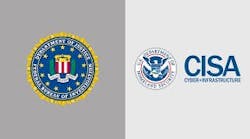The Food and Drug Administration (FDA) in cooperation with the National Association of State Departments of Agriculture (NASDA), USDA's Food Safety and Inspection Service (FSIS), and the Department of Homeland Security (DHS) has announced the availability of a model Food Emergency Response Plan Template.
The goal of the response plan is to enhance the protection of the nation's agricultural industry and food security through prevention, detection, response, and recovery.
The template provides states with a guide to develop either a stand-alone emergency response plan for responding to a food-related emergency or an addendum to an existing all-hazard state emergency response plan. Useful planning tools include documents previously developed in cooperation with the DHS - national planning scenarios, target capabilities, and uniform task lists.
"FDA remains vigilant in its mission to protect our country's food supply and continues to maintain collaborative partnerships with our federal and state partners by planning for, monitoring and reacting to any potential threats," said Dr. Robert E. Brackett, Director of FDA's Center for Food Safety and Applied Nutrition. "By collaborating more closely with our partners involved in food safety and security, we will better leverage all of the available resources to be better prepared for any food emergency incident."
Because a food emergency could occur at any point from farm to fork, including pre-harvest production, processing, and distribution, states can use the template to develop useful plans to manage a food emergency. In addition, states can establish a uniform structure and content that will result in response plans that are similar in structure, scope, and response operations among all states.
A food-related emergency involves the unintentional or deliberate contamination, threatened or actual, of food that impacts or may impact human health. A food emergency response plan does not apply to food incidents routinely handled by local or state health departments.
The response plan includes the following:
* Concept of Operations - establishes the framework for actions (i.e., specific functions of a response) that will take place during an incident response.
* Activation Levels - establish activation levels that provide decision makers with definitions of various degrees of an emergency.
* Principal Parties - identification of all agencies, organizations and individuals (principal parties) needed to carry out the response.
* Roles and Responsibilities for State, Federal, Tribal, and local agencies and the private sector.
The response plan was developed through a federal-state cooperative agreement and in consultation with a consortium of stakeholders. Federal representatives included USDA's Food Safety and Inspection Service (FSIS), the Department of Health and Human Services' (HHS) Food and Drug Administration (FDA) and the Centers for Disease Control and Prevention (CDC), and the Department of Homeland Security (DHS). State representatives included the National Association of State Departments of Agriculture (NASDA), the Association of State and Territorial Health Officials (ASTHO), the National Association of County and City Health Officials (NACCHO), and the Association of Food and Drug Officials (AFDO).
The Food Emergency Response Plan Template is available on the NASDA website.

